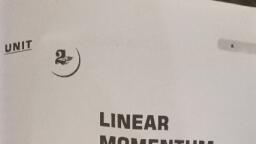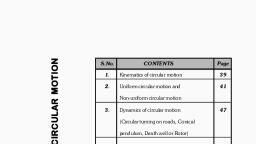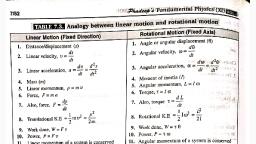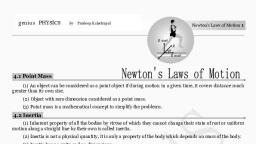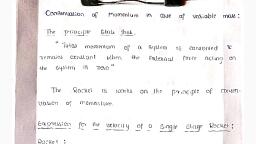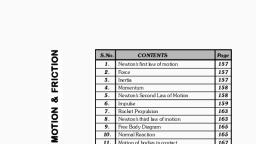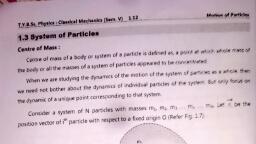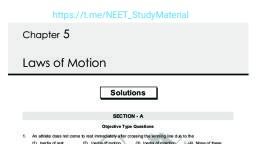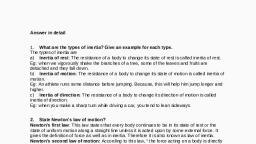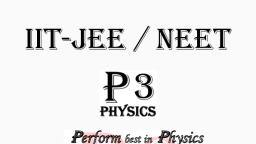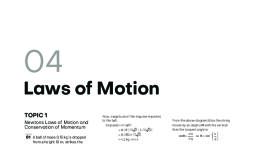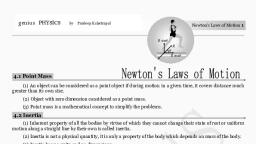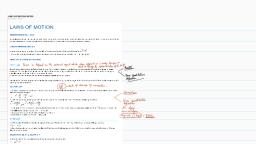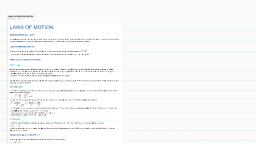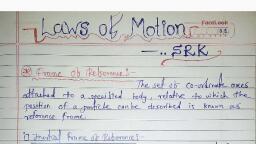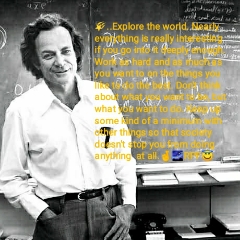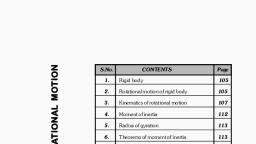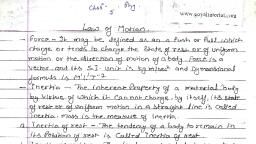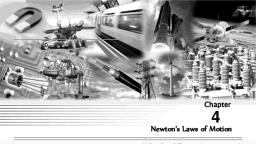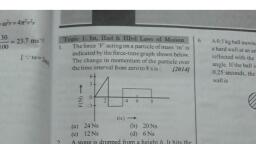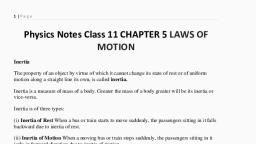Page 1 :
Let uj and u; be the velocities of particles of masses:, , m, and m, respectively in the centre of mass frame o:, reference. Thus, we have, , frame of reference. Let in a time interval dt, an amount of, mass dM is ejected from the rocket in the form of gas-jet. Let, -u be the velocity of gas-jet with respect to rocket, then the, , velocity of gas-jet in the laboratory frame will be (v—u), as, shown in Fig. 4.5,, , om, uy =u, -V,, , em, , usu, 2] ee a a ee, ‘edi (m,+m,) =m) +m,) My, , 1, Also, WU; =U, —-V,, , Thrust, , om., , Ia) er | . @, ie (m, +m,) m,+m, 2 ‘, , Also, the final velocity in this frame of reference is,, m,u,+m, uh, (m,+m,), , m,m, u, ao >(-m,u,), (m,+m,) (m,+m,)", , =0, , [‘“ using (7) and (8), , , , a P, 7,1, Gas-jet, datos, , Thus in the centre of mass frame of reference the stu, , , , g m,u ig. 4., particles are at rest while they have a velocity tame é Fig 1809, m,+m,, : 4 The force acting on the gas-jet = rate of change of mass, , the laboratory frame of reference., , the rocket due to escape of hot gases x velocity., dM, , 2 (vu), , dt, , 4.11 Motion of Rockets :, , The rocket is an example of system of variable mass,, , works on the principle of conservation of momentum. From Newton’s third law of motion, this is equal to the, , rust on the rocket tending to move it in the forward, lirection., , Let M(a variable) be the mass of rocket including mi, of fuel and v be its velocity at any instant t in laborat, , 110, , BSc. Physics Se. Physics - T m4
Page 2 :
Few = Mg where Mg is the weight of rocket, then the fore, acting on the rocket in forward direction is,, , , , , , , , , , , , , , , , , , , , Here M, = initial mass of rocket and fuel at t = 0, , en dM, Thrust on the rocket = Fapdrity eval final mass of rocket at any instant ‘t’, , =, u, , =, i, , velocity of gas-jet., , Equation (5) gives the velocity v of the rocket at any, stant ‘tv’. To obtain a high velocity v of the rocket, its final, ass M should be smaller than its initial mass M,., , If g = 0 and v, = 0 (initial velocity); then equation (5), , Let F.,, be the external force acting on the rocket. Her, , dM, =) Me ~@, ives,, , From Newton’s second law, the force on rocket is,, dM Wy My, = aM) .@ Song tog, ( i, Equation (2) = Equation (3),, Z (GS) werget Also if Moe 10 (maximum limit) and u = 2 kms"', then, d dM M ., Sly) = Ay —u)-Mg, dt v = 2xlog,(10) = 22.3026 xlog,,10, ma vat 2 y MAM ie = 2x2.3026x1 = 4.6 kms"!, , a « This value is much smaller than the escape velocity, au) Me (11.2 kms-!) and also orbital velocity (8 kms~'). This shows, dt di = that higher velocity cannot be obtained with the help of, , g 2, dv 1 dM 4 single stage rocket. Thus, for obtaining the required high, qe” Poa ce -. GI velocity 2-stage, 3-stage or even multiple stage rockets are, , fequired., , Multistage Rocket :, , To obtain higher velocities, multistage rockets are, employed. For example, in case of 3-stage rocket, the first, ‘lage is very heavy, the second stage is smaller than the first, and the third stage is smallest and lightest., , Jov = <u f M gfe, 1, , [v]J., = -u[log. My =e alt],, , V-Vy= -viog,( Me] { First of all the 1-stage of the rocket is sued to acquire, M, the acceleration of the rocket. When the fuel of the 1-stage, , M js exhausted, it detaches from rocket and drops off. The, , Vv = Vo tulog, (Me)-« oar CU velocity at this stage becomes the initial velocity of the, , B.Sc. Physics - B.Sc. Physics - I 11,3
Page 3 :
2-stage. Now the 2-stage is ignited. The rocket gain, acceleration and its velocity goes on increasing. When U, fuel of the 2-stage is exhausted, it too is detached from th, rocket. The velocity acquired so far by the rocket is less thai, the escape velocity. Finally the 3-stage rocket starts off wit, the required velocity., , 4.12 System of Variable Mass :, , Consider the mechanics of a system whose mass varie, with time. An example for this is a rocket which burns fuel, and ejects gases in one direction and in the process acquir, an acceleration in the opposite direction. The mass of th, rocket decreases with time during its motion., , Let M be the mass of the rocket at a particular instani, of time ‘t’ and v is the velocity at thta time. After an interval, of time At, let a small quantity of the fuel AM be burnt an, gases are ejected from the nozzle of the rocket with a veloci, ‘u’ relative to the rocket., , Now, the initial momentum of the rocket at time ‘t’ i, given by,, , 2 ee, , Also, at time (t + At) the mass of the rocket has, decreased to (M - AM) and velocity of the rocket increa:, to (v + Av). Thus, the final momentum of the system is given, by,, , = Mv, , P, = (M - AM)(v + Av) + (AM)(u) ot, , According to the principle of conservation of line:, momentum,, , eae,, (M - AM)(v + Av) + (AM)(u) = Mv, i.e. Mv + MAv - AMv ~ AMAv + (AM)u = My, , 114 B.Sc. Physics - 1, , , , ie. MAv = AM(v + Avy = u), Av AM, M.—= y+ Av—u, “r At At @ ), As At — 0, we can write, dv dM, = (r+ Ava) EG, at ate ) @), , For At 0, Av=0 and ~ is negative as mass of the, , yocket decreases with time., , Thus, equation (3) can be written as,, , dv dM, Sit Acti Lay, dt diy, ay My, dt dt, ee amar 4), dt dt, , Where u., is the relative velocity of the ejected gases,, equal to (u - v)., , The burnt gases escaping through the nozzle with high, speed gives the action force, corresponding there will be.a, reaction force exerted on the system by the mass leaving the, system. Thus,, , dv, “at, , In addition, if external forces also act on the system,, , then equation (5) can be written as,, , Meeks, , dt ‘reaction, , dM, = Ure ae, , 2 (3), , reaction, , +E,, , ext, , dv, , = M =, dt, , a ‘reaction, , B.Sc. Physics - I
